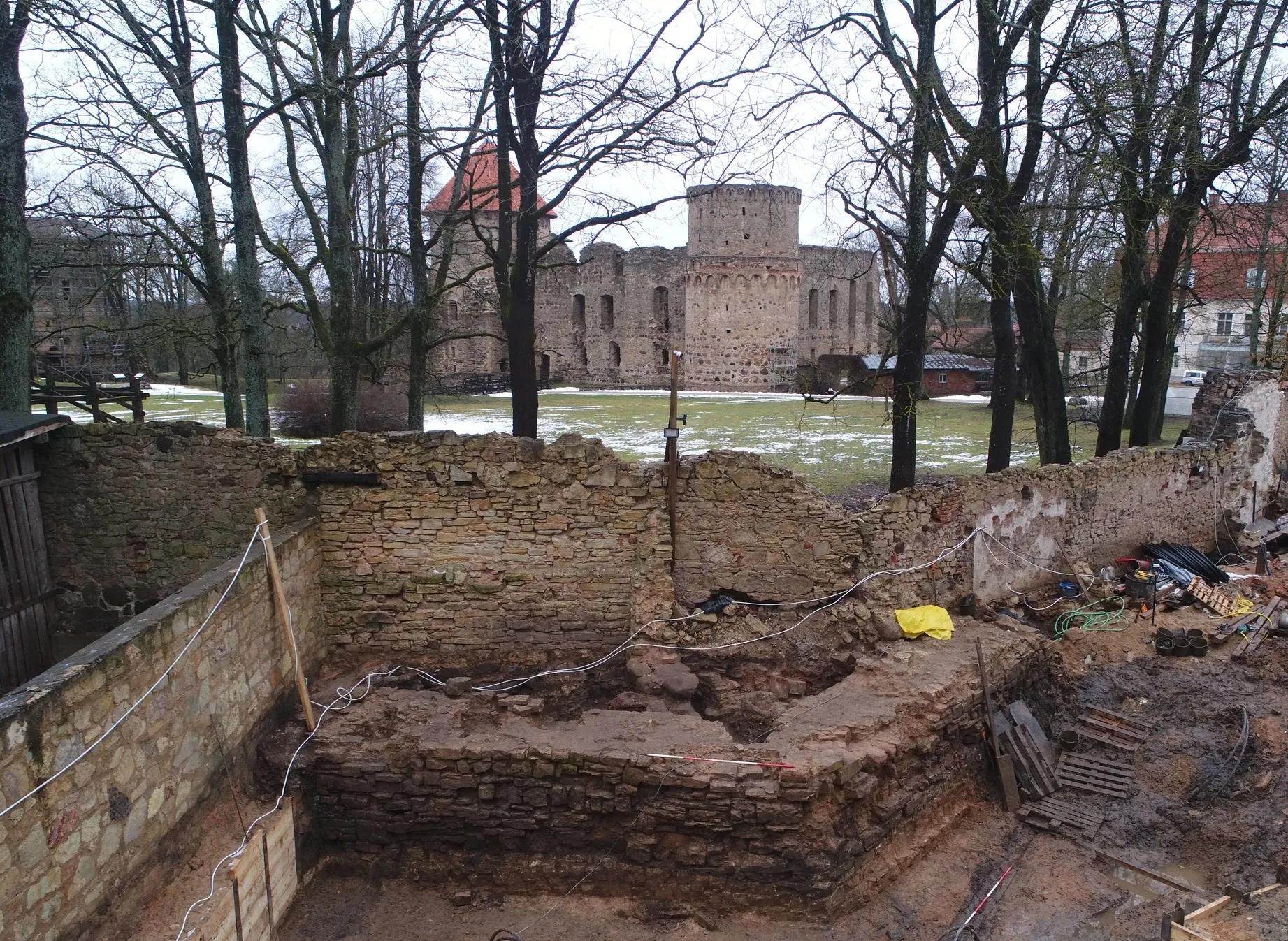Archaeologists uncover defensive wall of medieval castle

“The wall that was visible dates back to at least the 19th century. In order to enclose the castle territory, the real defensive wall was much more massive – 1.90 meters high and at least a meter wide,” says Oskars Ušpelis, an archaeologist at SIA “Arheoloģiskā izpēte” and adds that a defensive wall has not been uncovered in such a large area in Cēsis in recent decades. It is eight meters long. There is a known defensive wall in the courtyard of the Vanadziņa restaurant, the outcrops of which were visible when the house on Rīgas Street was rebuilt in the 1980s. Here, in the courtyard on Torņa Street, a pavilion will be built, where the preserved old defensive wall will also be exhibited.

Archaeologists have also found a 13th century oven, which is not a very common find, but the objects extracted from the ancient cultural layer will allow us to judge how the people of Cēsis lived in the Middle Ages. Confirmation has been obtained that the beginnings of the city can be attributed to the beginning of the 13th century. “In the second half of the 18th century, the city archive burned down. A large part of the written evidence was lost, there is no more older information about the 17th century. There is no evidence about earlier times, what the layout was, what the construction was like,” recalls O. Ušpelis.
Summer with torrential rains, rainy autumn did not help archaeologists in excavations. The working day often began with pumping water out of the excavation pit. “Groundwater is also seeping in at a depth of two meters. Where the tourist agency is now, there used to be a pond where the water gathered, now it has nowhere to stay,” says the archaeologist.

The yard area is 800 square meters. O. Ušpelis says that there will be another excavation area and an idea will be gained of what centuries have accumulated to a depth of three meters. The finds from the archaeological excavations will be transferred to the Cēsis Museum.

Photo: Archaeological research
Published22/01/2025



